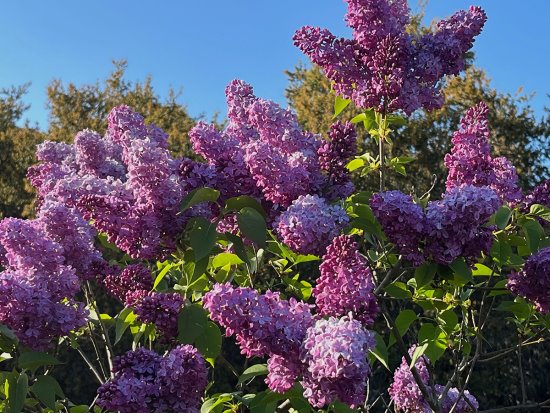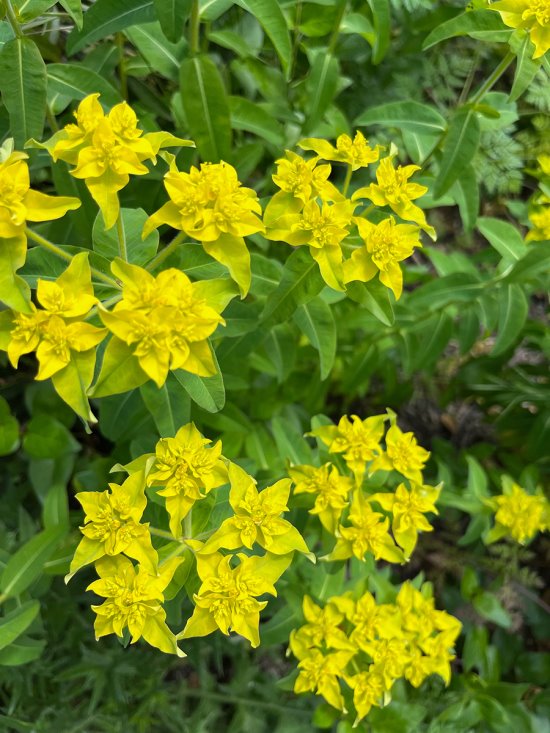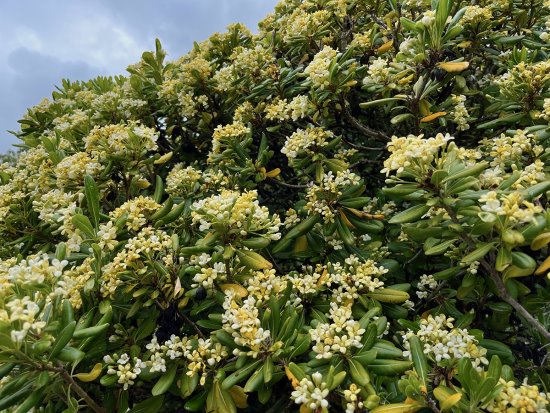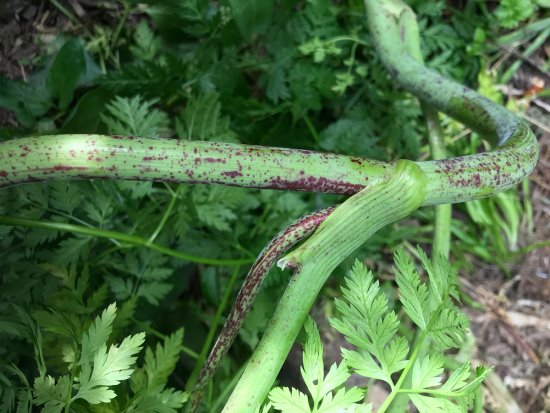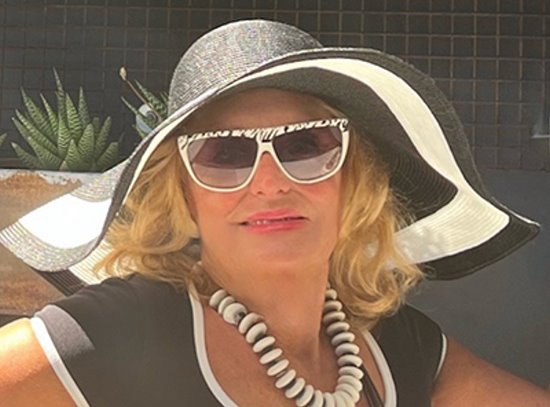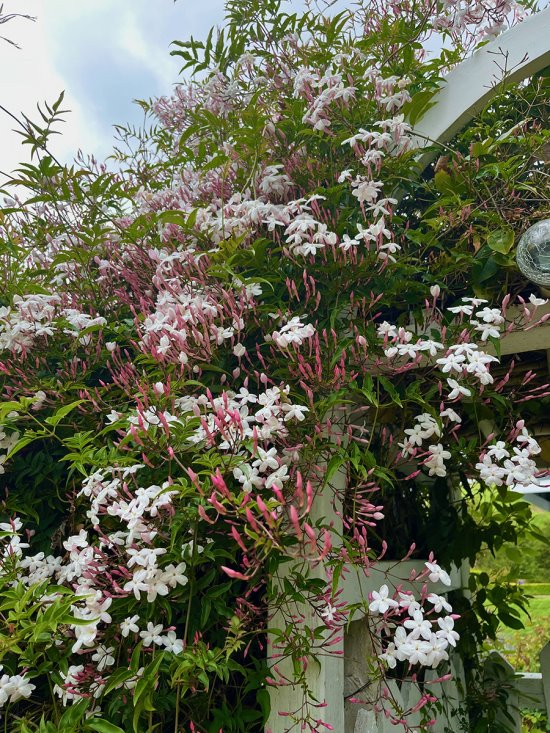 |
|
|
Sweet-smelling jasmine climbs the arbor. Photo Cynthia Brian
|
|
|
|
|
|
"Kings and cabbages go back to compost, but good deeds stay green forever."
 ~ Rick De Marinis
~ Rick De Marinis
 Have you ever thought good deeds may be planted? So many of the flowers, bushes, trees, and vines that we use in our gardens can be both good and bad. Some plants that are excellent in one yard are a disaster in someone else's landscape. Most of these plants are sold at nurseries and garden centers. The key is knowing what will be best for your garden.
Have you ever thought good deeds may be planted? So many of the flowers, bushes, trees, and vines that we use in our gardens can be both good and bad. Some plants that are excellent in one yard are a disaster in someone else's landscape. Most of these plants are sold at nurseries and garden centers. The key is knowing what will be best for your garden.
 In this article, I will share what has worked for me and what has not. I call my hypothesis, "Plant this, but don't plant that!"
In this article, I will share what has worked for me and what has not. I call my hypothesis, "Plant this, but don't plant that!"
 Jasmine
Jasmine
 As I open my living room doors, the sweet fragrance of jasmine fills the room. If you want a fast-growing vine to cover an arbor, pergola, or fence, jasmine fills the bill. Every spring, the pink-tinged white clusters of delicious smelling blossoms will perfume your yard. Taking cuttings for bouquets will perfume your bathrooms and other areas without the use of any chemical sprays. As much as I love jasmine, I must also caution you that it can be an aggressive grower if not managed. Jasmine climbs trees and can also suffocate other plants. I am forever pulling strands from boxwoods and cutting vines that have climbed over azaleas. However, for me, the beauty, blooms, and heady scent throughout my garden pushes the positive check marks. Should you plant jasmine? My verdict: Only you can decide.
As I open my living room doors, the sweet fragrance of jasmine fills the room. If you want a fast-growing vine to cover an arbor, pergola, or fence, jasmine fills the bill. Every spring, the pink-tinged white clusters of delicious smelling blossoms will perfume your yard. Taking cuttings for bouquets will perfume your bathrooms and other areas without the use of any chemical sprays. As much as I love jasmine, I must also caution you that it can be an aggressive grower if not managed. Jasmine climbs trees and can also suffocate other plants. I am forever pulling strands from boxwoods and cutting vines that have climbed over azaleas. However, for me, the beauty, blooms, and heady scent throughout my garden pushes the positive check marks. Should you plant jasmine? My verdict: Only you can decide.
 Ivy
Ivy
 Three decades ago, a new neighbor wanted an instant green, easy-maintenance ground cover. Against my ardent appeals to not plant an invasive species, they chose ivy. Those neighbors are long gone, yet 30 years later, I am still battling that ivy that crawled under and over fences. I'm sure other neighbors are also attempting to eradicate it. Ivy boasts glossy-green leaves, creates beautiful topiaries, and in many parts of the country, ivy is welcome, even coveted. Yet here in California, this rapidly growing species harbors rats, strangles trees, damages structures, and is almost impossible to completely contain. My verdict: DON'T PLANT IVY!
Three decades ago, a new neighbor wanted an instant green, easy-maintenance ground cover. Against my ardent appeals to not plant an invasive species, they chose ivy. Those neighbors are long gone, yet 30 years later, I am still battling that ivy that crawled under and over fences. I'm sure other neighbors are also attempting to eradicate it. Ivy boasts glossy-green leaves, creates beautiful topiaries, and in many parts of the country, ivy is welcome, even coveted. Yet here in California, this rapidly growing species harbors rats, strangles trees, damages structures, and is almost impossible to completely contain. My verdict: DON'T PLANT IVY!
 Lilac
Lilac
 When lilacs bloom, spring has arrived. Lilacs are known for their beautiful, fragrant flowers in colors of white, pink, lavender, purple, and blue, which add an attractive touch to any landscape. My mother grew the most spectacular lilacs and I am continuing the tradition. Lilacs are low-maintenance plants that thrive in a variety of soil conditions and climates, making them a versatile choice for gardeners. Beyond their aesthetic appeal, lilacs provide valuable ecosystem services. Bees and hummingbirds are attracted to the delicious and substantial nectar produced by lilacs. Some studies suggest that the scent of lilacs may have a calming effect on the human nervous system, making them a great choice for creating a relaxing outdoor environment. My verdict: Plant this.
When lilacs bloom, spring has arrived. Lilacs are known for their beautiful, fragrant flowers in colors of white, pink, lavender, purple, and blue, which add an attractive touch to any landscape. My mother grew the most spectacular lilacs and I am continuing the tradition. Lilacs are low-maintenance plants that thrive in a variety of soil conditions and climates, making them a versatile choice for gardeners. Beyond their aesthetic appeal, lilacs provide valuable ecosystem services. Bees and hummingbirds are attracted to the delicious and substantial nectar produced by lilacs. Some studies suggest that the scent of lilacs may have a calming effect on the human nervous system, making them a great choice for creating a relaxing outdoor environment. My verdict: Plant this.
 Euphorbia
Euphorbia
 While euphorbia may be a beautiful and eye-catching addition to a garden because of the chartreuse-colored blooms, it is important to exercise caution when considering planting this species. Euphorbia contains a toxic sap that can cause skin irritation, and in some cases, severe allergic reactions. In addition, euphorbia self-seeds and spread quickly, making it difficult to control and invasive. Seeds from euphorbia blew into my garden from the surrounding hillside. At first, I was thrilled because I had seen this specimen in the nursery and thought the color was so unique. A single plant multiplied the following year to hundreds, then thousands, suffocating and killing most of my other plants as the roots strangled other roots. For the past five years, I have been pulling plants by hand and discarding them into the garbage bin. Despite my earnest efforts, euphorbia still invades my orchard and attempts to creep into my garden beds. My verdict: DON'T PLANT EUPHORBIA.
While euphorbia may be a beautiful and eye-catching addition to a garden because of the chartreuse-colored blooms, it is important to exercise caution when considering planting this species. Euphorbia contains a toxic sap that can cause skin irritation, and in some cases, severe allergic reactions. In addition, euphorbia self-seeds and spread quickly, making it difficult to control and invasive. Seeds from euphorbia blew into my garden from the surrounding hillside. At first, I was thrilled because I had seen this specimen in the nursery and thought the color was so unique. A single plant multiplied the following year to hundreds, then thousands, suffocating and killing most of my other plants as the roots strangled other roots. For the past five years, I have been pulling plants by hand and discarding them into the garbage bin. Despite my earnest efforts, euphorbia still invades my orchard and attempts to creep into my garden beds. My verdict: DON'T PLANT EUPHORBIA.
 Mock Orange
Mock Orange
 The mock orange tree, also known as Philadelphus, is a beautiful flowering shrub that produces fragrant, white, or cream-colored blooms that attract butterflies and hummingbirds. This shrub is relatively low-maintenance and easy to grow, making it an ideal choice for novice gardeners. It is often used as a natural screen or hedge, providing privacy, and adding aesthetic value to your outdoor space. I planted my two trees next to a brick stairway to enjoy the soothing and relaxing fragrance as I passed. Prune and shape the way you wish. My verdict: Plant this.
The mock orange tree, also known as Philadelphus, is a beautiful flowering shrub that produces fragrant, white, or cream-colored blooms that attract butterflies and hummingbirds. This shrub is relatively low-maintenance and easy to grow, making it an ideal choice for novice gardeners. It is often used as a natural screen or hedge, providing privacy, and adding aesthetic value to your outdoor space. I planted my two trees next to a brick stairway to enjoy the soothing and relaxing fragrance as I passed. Prune and shape the way you wish. My verdict: Plant this.
 Poisonous Hemlock
Poisonous Hemlock
 Despite being highly toxic to humans and animals, poisonous hemlock was introduced to the United States from Europe as a decorative plant in the 1800s. All parts of the plant are poisonous. It contains a toxin called coniine, which can cause respiratory failure, paralysis, convulsions, and ultimately death if ingested in large amounts. (Remember Socrates?) Poison hemlock is a member of the carrot family and resembles Queen Anne's lace. Hemlock is easy to identify by the crimson streaks on the stems. The leaves are fern-like and the white flowers delicate, but beware, this invasive plant grows to 12 feet or more and is very difficult to eradicate with its long tap roots. Wear protective clothing when pulling or mowing. Do not put the plant in the compost pile. Dispose of the entire plant in the garbage and make sure that the seeds have not spread. Like euphorbia, poison hemlock seeds blew in from the adjacent open space and began to take over my hillside. Euphorbia and hemlock often grow in tandem. Both are extremely difficult to control. Every year I get a bit closer to extermination, but plants still find their way to grow. My verdict: DON'T PLANT HEMLOCK!
Despite being highly toxic to humans and animals, poisonous hemlock was introduced to the United States from Europe as a decorative plant in the 1800s. All parts of the plant are poisonous. It contains a toxin called coniine, which can cause respiratory failure, paralysis, convulsions, and ultimately death if ingested in large amounts. (Remember Socrates?) Poison hemlock is a member of the carrot family and resembles Queen Anne's lace. Hemlock is easy to identify by the crimson streaks on the stems. The leaves are fern-like and the white flowers delicate, but beware, this invasive plant grows to 12 feet or more and is very difficult to eradicate with its long tap roots. Wear protective clothing when pulling or mowing. Do not put the plant in the compost pile. Dispose of the entire plant in the garbage and make sure that the seeds have not spread. Like euphorbia, poison hemlock seeds blew in from the adjacent open space and began to take over my hillside. Euphorbia and hemlock often grow in tandem. Both are extremely difficult to control. Every year I get a bit closer to extermination, but plants still find their way to grow. My verdict: DON'T PLANT HEMLOCK!
 Roses
Roses
 Many people believe that roses are challenging to grow and not worth the effort. The thorns are also a major turn-off. Despite my many scratches, I find roses to be one of the most rewarding plants in my garden with a blooming time that lasts nine or 10 months. Although I'll plant a rose from any breeder that captures my fancy, most of my roses are David Austin English roses which were hybridized to combine the characteristics of old-fashioned roses with the repeat flowering of modern roses, resulting in a stunning range of colors, shapes, and sizes. They are also highly fragrant, producing a delightful scent that fills the air and lifts my spirits. I grow climbing, rambling, tea, shrub, and more. Deadhead as flowers fade to encourage continuous blooms. My verdict: Plant this.
Many people believe that roses are challenging to grow and not worth the effort. The thorns are also a major turn-off. Despite my many scratches, I find roses to be one of the most rewarding plants in my garden with a blooming time that lasts nine or 10 months. Although I'll plant a rose from any breeder that captures my fancy, most of my roses are David Austin English roses which were hybridized to combine the characteristics of old-fashioned roses with the repeat flowering of modern roses, resulting in a stunning range of colors, shapes, and sizes. They are also highly fragrant, producing a delightful scent that fills the air and lifts my spirits. I grow climbing, rambling, tea, shrub, and more. Deadhead as flowers fade to encourage continuous blooms. My verdict: Plant this.
 As you probably deciphered, I adore plants that supply flowers, fragrance, pollinator benefits, and beauty to my garden. I'm willing to do a bit of extra work to experience the specimens on my "plant this" list, but I do not recommend any of the "do not plant" groups.
As you probably deciphered, I adore plants that supply flowers, fragrance, pollinator benefits, and beauty to my garden. I'm willing to do a bit of extra work to experience the specimens on my "plant this" list, but I do not recommend any of the "do not plant" groups.
 We will all return to compost one day but meanwhile, what good deeds will stay green in your garden?
We will all return to compost one day but meanwhile, what good deeds will stay green in your garden?
 Happy Gardening. Happy Growing.
Happy Gardening. Happy Growing.
 PS: Don't forget the Be the Star You Are!r Shoe Drive. Shoes may be dropped off at Moraga schools through May 25 and through June 30 at https://5aspace.com/, 455 Moraga Rd. #F, Moraga or www.TeamHoogs.com, 629 Moraga Road (next to 7/11), Moraga. For more information, visit https://www.bethestaryouare.org/shoedrive
PS: Don't forget the Be the Star You Are!r Shoe Drive. Shoes may be dropped off at Moraga schools through May 25 and through June 30 at https://5aspace.com/, 455 Moraga Rd. #F, Moraga or www.TeamHoogs.com, 629 Moraga Road (next to 7/11), Moraga. For more information, visit https://www.bethestaryouare.org/shoedrive
|


